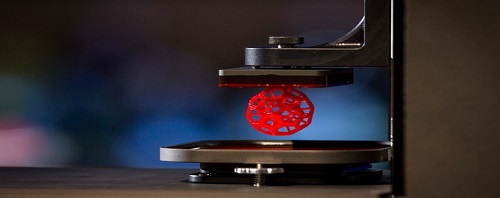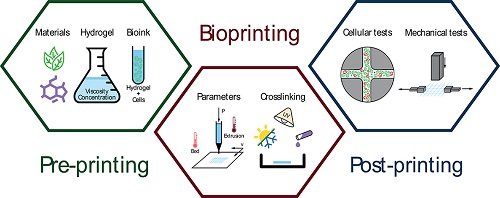Bio-Printing
3D printing is the process of making tangible objects using digital files. It allows you to create precise shapes down to the millimeter. This technology is becoming increasingly useful in the medical industry, allowing professionals to print implants and prosthetics that fit comfortably because of the machinery's precise accuracy. A step up from these plastic prosthetics would be bioprinting. Bioprinting allows medical professionals to regenerate skin cells. Scientists were able to help regenerate skin draughts in burn victims and print blood vessels, synthetic ovaries, and even a pancreas. These artificial organs and cells can grow and function within the patient and take up the functionality of the old organ. Biopri- nting could save millions of lives a year for patients who depend on these transplants and has the potential to benefit medical areas like regenerative and personalized medicine, drug discovery, and cosmetics. Click Me!

Bioprinting is an extension of 3D printing and also uses digital files as a blueprint to construct an object layer by layer. Instead of plastics and other materials, bioprinting bu- ilds an object out of cells and biomaterials that allow cells to multiply. There are three basic steps: pre-bioprinting, bioprinting, and post-bioprinting. During pre-bioprinting, digital files/blueprints are created, usually taken from MRI or CT scans. Then cells are prepared and mixed with bioink (bioink is any natural or synthetic polymer that is biocom- patible). Then cells are checked to make sure there are enough to print the tissue. Diffe- rent types of tissue require different cells, bioinks, and equipment, so during bioprinting, scientists prepare the correct materials. Post-bioprinting structures are crosslinked using an ionic solution or UV light and placed inside an incubator. Click Me!

Some of the most common uses for bioprinting are drug development, artificial organs, and wound healing. Many drug studies rely on living subjects, and bioprinting allows an “ethical and cost-effective solution” to drug testing. Many people need organ donations and wait years before they can get one, so being able to print an organ can save millions of lives. Researc- hers will one day be able to do skin grafts, bone marrow transplants, or even plastic surgery due to the variety of tissue-specific bioinks. Bioprinting has the potential to be a life-sa- ving medical advancement, but it still has a long way to go. Many organs such as kidneys are difficult to replicate due to their “complex cellular processes.” Human organs are much more complex than plastic trinkets, but researchers are finding ways to make this life-saving te- chnology a reality. Click Me!
